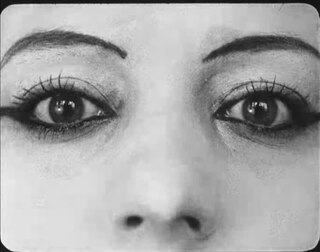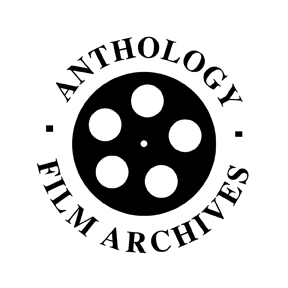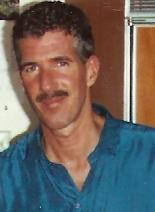Related Research Articles

A Movie is a 1958 experimental collage film by American artist Bruce Conner. It combines pieces of found footage taken from various sources such as newsreels, soft-core pornography, and B movies, all set to a score featuring Ottorino Respighi's Pines of Rome.

Jonas Mekas was a Lithuanian-American filmmaker, poet, and artist who has been called "the godfather of American avant-garde cinema". Mekas' work has been exhibited in museums and at festivals worldwide. Mekas was active in New York City, where he co-founded Anthology Film Archives, The Film-Makers' Cooperative, and the journal Film Culture. He was also the first film critic for The Village Voice.
An underground film is a film that is out of the mainstream either in its style, genre or financing.

The New Hollywood, Hollywood Renaissance, American New Wave, or New American Cinema, was a movement in American film history from the mid-1960s to the early 1980s, when a new generation of filmmakers came to prominence. They influenced the types of film produced, their production and marketing, and the way major studios approached filmmaking. In New Hollywood films, the film director, rather than the studio, took on a key authorial role.

Experimental film or avant-garde cinema is a mode of filmmaking that rigorously re-evaluates cinematic conventions and explores non-narrative forms or alternatives to traditional narratives or methods of working. Many experimental films, particularly early ones, relate to arts in other disciplines: painting, dance, literature and poetry, or arise from research and development of new technical resources.

BolexInternational S. A. is a Swiss manufacturer of motion picture cameras based in Yverdon located in Canton of Vaud, the most notable products of which are in the 16 mm and Super 16 mm formats. Originally Bol, the company was founded in 1925 by Charles Haccius and Jacques Bogopolsky, the company's name having been derived from Bogopolsky's name. In 1923 he presented the Cinégraphe Bol at the Geneva fair, a reversible apparatus for taking, printing, and projecting pictures on 35 mm film. He later designed a camera for Alpa of Ballaigues in the late 1930s.

Anthology Film Archives is an international center for the preservation, study, and exhibition of film and video, with a particular focus on independent, experimental, and avant-garde cinema. The film archive and theater is located at 32 Second Avenue on the southeast corner of East 2nd Street, in a New York City historic district in the East Village neighborhood of Manhattan.
Structural film was an avant-garde experimental film movement prominent in the United States in the 1960s. A related movement developed in the United Kingdom in the 1970s.
Sidney Peterson, was an American writer, artist, avant-garde filmmaker, and educator. He founded the first film courses at the California School of Fine Arts in 1947.
Robert Marion Stewart, known as Bhob Stewart was an American writer, editor, cartoonist, filmmaker, and active fan who contributed to a variety of publications over a span of five decades. His articles and reviews appeared in TV Guide, Publishers Weekly, and other publications, along with online contributions to Allmovie, the Collecting Channel, and other sites. In 1980, he became the regular film columnist for Heavy Metal.

Warren Sonbert was an American experimental filmmaker whose work of nearly three decades began in New York in the mid-1960s, and continued in San Francisco throughout the second half of his life. Known for the exuberant imagery of films such as Carriage Trade and especially for their intricate and innovative editing, he has been described as "the supreme Romantic diarist of the cinema" as well as "both a probing and playful artist and a keen intellect reveling in the interplay between all the creative arts."

Jackie Hatfield was an artist, writer, and academic. According to the influential artist-led no.w.here website: "Jackie Hatfield is an artist and writer who makes expanded and participatory cinematic artworks using digital video, performance, sound and digital print. She has co-edited two critical books around women's use of technology in art practice and has published essays that concentrate on under-explored histories of experimental film and video practices."
Peggy Ahwesh is an American experimental filmmaker and video artist. She received her B.F.A. at Antioch College. A bricoleur who has created both narrative works and documentaries, some projects are scripted and others incorporate improvised performance. She makes use of sync sound, found footage, digital animation, and Pixelvision video. Her work is primarily an investigation of cultural identity and the role of the subject in various genres. Her interests include genre; women, sexuality and feminism; reenactment; and artists' books. Her works have been shown worldwide, including in San Francisco, New York, Barcelona, London, Toronto, Rotterdam, and Créteil, France. Starting in 1990, she has taught at Bard College as a Professor of Film and Electronic Arts. Her teaching interests include: experimental media, history of the non-fiction film, and women in film.

Mildred "Chick" Strand was an American experimental filmmaker, "a pioneer in blending avant-garde techniques with documentary". Chick Strand contributed to the movement of women's experimental cinema in the early 1960s–1970's. Strand's film making and directing approach incorporates personal elements from her own life experiences and societal forces and realities. The film Elasticity (1976) is an example of Strand's attempts at autobiographical work that also incorporates Strand's specific standpoint on certain social issues. Feminist issues and anthropological inquiries about the human condition are frequent themes in Strand's films. However, because Strand's films and work were often deeply personal and subjective, they were often rejected from male-dominated academic circles of anthropologists and critiqued for being non-academic works.
The Film-Makers' Cooperative is an artist-run, non-profit organization founded in 1961 in New York City by Jonas Mekas, Andy Warhol, Shirley Clarke, Stan Brakhage, Jack Smith, Lionel Rogosin, Gregory Markopoulos, Lloyd Michael Williams, and other filmmakers, for the distribution, education, and exhibition of avant-garde films and alternative media.
The Clock is an art installation by video artist Christian Marclay. It is a looped 24-hour video supercut that feature clocks or timepieces. The artwork itself functions as a clock: its presentation is synchronized with the local time, resulting in the time shown in a scene being the actual time.
John G. Hanhardt is an American author, art historian, and curator of film and media arts. Hanhardt was the Consulting Senior Curator for Media Arts at the Smithsonian Museum of American Art, where he developed exhibitions, collections, and archives in film and the media arts. He is considered to be one of the leading scholars on video artist Nam June Paik.
African Film Festival, Inc. (AFF) is a non-profit cultural organization that presents an annual film festival and year-round community programs. Based in New York City, the organization was founded in 1990. The organization is dedicated to promoting greater understanding of African culture through film.
Walden, originally titled Diaries, Notes and Sketches , is a 1968 American film by experimental filmmaker Jonas Mekas. After several years of filming everyday scenes from his life, Mekas was commissioned by the Albright–Knox Art Gallery to make Walden. It was his first major diary film, and he named it after Henry David Thoreau's 1854 memoir Walden. Mekas's film has received acclaim as a work of avant-garde cinema.

City symphonies emerged in the 1920s, a unique genre of film emerged encompassing documentary, experimental, and the avant-garde. Coming to prominence alongside modernist art movements such as futurism, constructivism, and radicalism, city symphonies reflect the historical development of city centers and technological hubs of advancement. As the art of cinema became more respected and auteurist, filmmakers such as Walter Ruttman and Dziga Vertov gravitated towards works highlighting the beauty of cities, aiming to capture scenes of modern life from their narrative points of views.
References
- 1 2 3 Weiler, A. H. (October 12, 1973). "Silent 'Carriage Trade' Is World of Images". The New York Times . Retrieved November 21, 2023.
- ↑ Gartenberg, Jon (2015). "A Delicate Balance: Warren Sonbert's Creative Legacy". Framework: The Journal of Cinema and Media. 56 (1): 18. doi:10.1353/frm.2015.a579198.
- ↑ Ehrenstein, David (October 21, 2012). "The Tuxedo Theater: On filmmaker Warren Sonbert". Los Angeles Review of Books . Retrieved November 21, 2023.
- 1 2 Mekas, Jonas (November 19, 1970). "Movie Journal". The Village Voice . p. 43.
- 1 2 Gartenberg, Jon (2015). "Film". Framework: The Journal of Cinema and Media. 56 (1): 156. doi:10.1353/frm.2015.a579215.
- ↑ Gartenberg, Jon (2002). "The Fragile Emulsion". The Moving Image . 2 (2): 142–153.
- ↑ "The Experimental Narratives of Warren Sonbert" (PDF). Museum of Modern Art. 2023. Retrieved November 21, 2023.
- ↑ "Essential Cinema". Anthology Film Archives . Retrieved November 21, 2023.